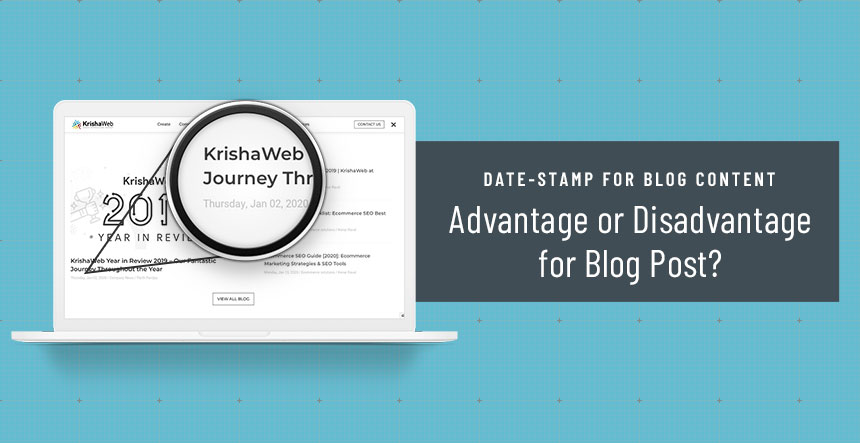




A blog date stamp is a timestamp that indicates when a blog post was originally published, or when it was last updated. It serves as a point of reference for both the author and the readers, offering an insight into the age and relevance of the content. In this era of ever-evolving technology and rapidly changing trends, content can become outdated quickly. Date stamps are essential tools for managing and organizing your blog content, helping readers make informed decisions about the value and relevance of your posts.
There isn’t a one-size-fits-all answer to this question, as it depends on the nature of your content and your target audience. However, it’s important to consider the benefits and drawbacks of using date stamps before making a decision.
If you frequently update your blog posts to keep them relevant and accurate, consider including an “Article Updated On” date stamp. This not only informs readers that the content has been revised but can also signal to search engines that your content is fresh and up to date. Be sure to only use this feature when significant updates have been made to the content, as minor changes may not warrant a new date stamp.
The best date format for your blog posts depends on your audience and their preferences. Here are some common date formats to consider:
Consider the location and cultural background of your target audience when selecting a date format. Using a format that is familiar and easy to understand will make it more likely for readers to engage with your content.
Date stamps are valuable tools that can enhance the user experience on your blog and contribute to your content’s relevance and credibility. While it can provide important context for your readers and help establish you as an authority in your niche, it can also lead to outdated content and potentially hurt your search engine rankings. By carefully weighing the pros and cons and considering strategies like including an “article updated on” date stamp
A ‘sticky’ website is a website that is capable of enticing visitors to stay longer than the usual span of time and is capable of encouraging visitors to return in the future. Removing the date from the blogs is considered to be a useful technique if you want to achieve the result. However, it is a controversial issue and there is support for both “in favour of using the dates” and “against using the dates” on the blogs.
Let me acknowledge you first, adding a label of “DATE” is the choice of individuals. In some cases, it’s beneficial and on opposite side it may harm, too. Majorly, choice depends on the content what you are opted to publish…
Viewers can easily distinguish recent blog-posts from the old blog-posts whenever you date a blog-post and this distinction may become harmful to your website if you post time-sensitive blogs. In this scenario, the viewers may leave your website without reading a blog if they notice that a blog-post is old.
For example, a blog on your website may deliver some tips to the viewers on a particular issue. These tips may have been relevant in the past and are equally relevant at present. However, if a viewer notices an earlier date on the blog-post, then he/she may consider that these tips are outdated and may leave the website without reading the text.
Therefore, it is prudent not to date a time-sensitive blog-post. However, removing the date may not adversely affect the websites with evergreen blogs; although, it is hard to predict how many viewers will consider a particular blog to be evergreen. Adding dates to the blogs may have positive effects in some scenarios. The following examples may shed some light on this matter.
Google and other search engines take various factors into account when ranking content, including the freshness and relevance of the information. Date stamps can play a role in this process, as search engines may prioritize recently published or updated content. However, it’s important to note that quality and relevance are more important than recency. Focus on producing high-quality content that provides value to your readers, and use date stamps as a tool to convey the timeliness of your posts.
Let us know whether you show the date on a post or not, and what method you use if you display dates to the user but hide them from search engines.
Subscribe to our newsletter and learn about the latest digital trends.